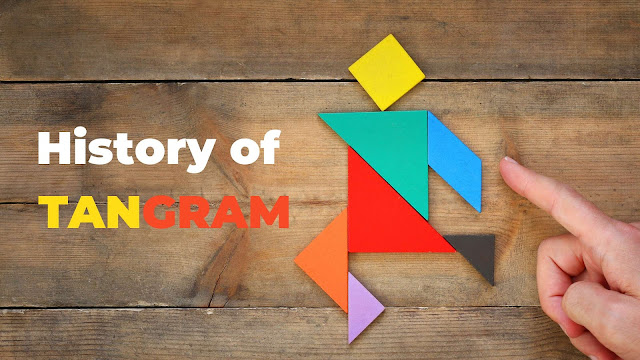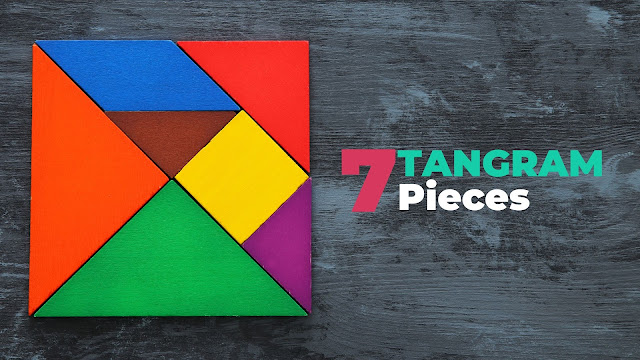Captivating Tangram Puzzle
Unleash Your Creativity and Problem-Solving Skills with the Captivating Tangram Puzzle
Are you looking for a fun and challenging way to enhance your problem-solving skills and unleash your creativity? Look no further than the captivating and timeless Tangram puzzle. This intriguing Chinese puzzle consists of seven geometric pieces that you can arrange to form countless shapes and designs.
With its simple rules and endless possibilities, the Tangram puzzle sharpens your critical thinking abilities while also providing a platform for artistic expression. Whether you're a novice or an experienced puzzler, the Tangram puzzle offers a rewarding and engaging experience that can be enjoyed by all ages.
By manipulating the Tangram pieces, you'll develop spatial awareness, logical reasoning, and analytical skills – crucial abilities that can benefit various aspects of your life, such as problem-solving in the workplace or coming up with innovative solutions to everyday challenges.
So, set aside some time in your day to engage with the Tangram puzzle. Get ready to experience the joy of discovering new shapes, solving intricate patterns, and unlocking the power of your creativity and problem-solving skills.
The Tangram puzzle has a rich and fascinating history that dates back to ancient China. It originated during the Song Dynasty (960-1279 AD) and quickly gained popularity as a form of entertainment and education. The name "Tangram" is derived from the Chinese words "tang," meaning "seven," and "gram," meaning "board."
Legend has it that the Tangram puzzle was created by a Chinese sage who broke a square tile into seven pieces as a gift to the emperor. The puzzle was then used to test the wisdom and intelligence of the emperor's advisors. Over time, the Tangram puzzle spread beyond the palace walls and became a favourite pastime of the Chinese people.
Benefits of Playing with Tangram Puzzles
Playing with Tangram puzzles offers a wide range of benefits for both children and adults. From improving cognitive skills to enhancing creativity, here are some of the key advantages of engaging with this captivating puzzle:
1. Enhanced Problem-Solving Skills: The Tangram puzzle is an excellent tool for honing problem-solving abilities. As you manipulate the seven geometric pieces to form specific shapes, you'll learn to think critically, analyze patterns, and develop innovative solutions.
2. Improved Spatial Awareness: The Tangram puzzle requires you to visualize and manipulate shapes in your mind. This helps develop spatial awareness, which is essential for tasks such as navigation, geometry, and even sports.
3. Boosted Creativity: The open-ended nature of the Tangram puzzle encourages creative thinking and artistic expression. You can create a wide variety of shapes and designs, allowing your imagination to run wild and explore different possibilities.
4. Enhanced Concentration and Focus: Solving Tangram puzzles requires concentration and focus. By engaging with the puzzle, you'll train your mind to stay focused on a specific task, which can benefit you in other areas of your life as well.
5. Stress Relief: Engaging with Tangram puzzles can be a calming and meditative experience. It can help reduce stress and anxiety by providing a distraction from everyday worries and allowing you to focus on the present moment.
How to Solve a Tangram Puzzle
Solving a Tangram puzzle may seem daunting at first, but with a little practice and patience, you'll soon become a master. Here's a step-by-step guide to help you get started:
1. Familiarise Yourself with the Seven Pieces: The Tangram puzzle consists of seven geometric pieces: one square, one parallelogram, and five triangles of different sizes. Take some time to study each piece and understand its shape and dimensions.
2. Start with Simple Shapes: Begin by attempting to recreate simple shapes using the Tangram pieces. Start with basic designs like squares, rectangles, and triangles. This will help you get comfortable with the pieces and their arrangement.
3. Break Down Complex Shapes: Once you're comfortable with the basic shapes, challenge yourself to recreate more complex designs. Start breaking down the shape into smaller components and try to fit the Tangram pieces accordingly.
4. Experiment and Iterate: Solving a Tangram puzzle requires experimentation and iteration. Don't be afraid to try different combinations and arrangements of the pieces. The more you practice, the better you'll become at visualizing and manipulating the shapes.
5. Challenge Yourself: As you become more proficient, challenge yourself with more advanced shapes and designs. There are countless Tangram puzzles available online or in puzzle books that offer varying levels of difficulty.
Remember, solving a Tangram puzzle is as much about the process as it is about the end result. Enjoy the journey and embrace the challenge!
Tips and Tricks for Solving Tangram Puzzles
While solving Tangram puzzles requires practice and experimentation, here are some tips and tricks to help you improve your solving skills:
1. Start with the Corners: When solving a Tangram puzzle, it's often helpful to start with the corners. By placing the larger triangles in the corners, you establish a framework from which you can build the rest of the shape.
2. Pay Attention to Symmetry: Symmetry is a key element in Tangram puzzles. Look for patterns and symmetrical shapes within the design you're trying to recreate. This will help guide your placement of the Tangram pieces.
3. Rotate and Flip the Pieces: Don't limit yourself to placing the Tangram pieces in their original orientation. Experiment with rotating and flipping the pieces to find the perfect fit. Sometimes a slight adjustment can make all the difference. Magnetic tangrams can be really handy for this.
4. Practice Visualization: Visualization is a crucial skill when solving Tangram puzzles. Practice visualizing the shapes and their relationship to each other in your mind. This will help you plan your moves and find the best arrangement.
5. Take Breaks: If you're feeling stuck or frustrated, take a break and come back to the puzzle with a fresh perspective. Sometimes stepping away for a while can help you see the solution more clearly.
Remember, solving Tangram puzzles is a journey of discovery and learning. Embrace the challenges, celebrate your successes, and don't be afraid to ask for help when needed.
Tangram Puzzle Variations and Challenges
While the traditional Tangram puzzle consists of seven pieces, there are numerous variations and challenges that add an extra layer of excitement and difficulty to the puzzle. Here are some popular Tangram puzzle variations:
1. Double Tangram: The double Tangram puzzle consists of two sets of Tangram pieces, doubling the challenge and the possibilities. With 14 pieces instead of seven, this variation offers a greater level of complexity and creativity.
2. Silhouette Tangram: In silhouette Tangram puzzles, instead of being given a specific shape to recreate, you're provided with a silhouette or outline. Your task is to fill in the silhouette using the Tangram pieces, creating a shape that matches the outline.
3. Time Challenges: Time challenges add an element of speed to the Tangram puzzle. Set a timer and see how quickly you can solve a specific design or shape. This variation tests your ability to think and act quickly under pressure.
4. Multiplayer Tangram: Multiplayer Tangram puzzles allow you to collaborate with friends or family members to solve the puzzle together. This variation promotes teamwork, communication, and creative problem-solving.
Exploring these variations and challenges can add a new level of excitement and engagement to your Tangram puzzle journey. Challenge yourself and push the boundaries of your problem-solving skills!
Tangram Puzzles for Children and Educational Purposes
Tangram puzzles are not only entertaining but also highly beneficial for children's development. They offer a valuable learning experience that promotes cognitive skills, creativity, and critical thinking. Here's how
Tangram puzzles can benefit children:
1. Mathematical Concepts: Tangram puzzles introduce children to fundamental mathematical concepts such as geometry, symmetry, and spatial relationships. By manipulating the Tangram pieces, children develop an intuitive understanding of shape and proportion.
2. Problem-Solving Skills: Tangram puzzles encourage children to think critically, analyze patterns, and develop problem-solving strategies. They learn to approach problems from different angles and find multiple solutions.
3. Hand-Eye Coordination: Manipulating the Tangram pieces requires precise hand-eye coordination. Children develop fine motor skills and spatial awareness as they fit the pieces together.
4. Enhanced Creativity: Tangram puzzles provide a platform for artistic expression and creativity. Children can create their own designs and explore different possibilities, fostering imaginative thinking.
Tangram puzzles are widely used in educational settings to enhance learning outcomes. Teachers incorporate Tangram puzzles into their lesson plans to engage students and promote interactive learning. The puzzles can be adapted to various subjects, including math, art, and even storytelling.
Conclusion and Final Thoughts
The Tangram puzzle is a captivating and timeless pastime that offers a unique blend of creativity and problem-solving. By engaging with the Tangram pieces, you'll develop critical thinking abilities, enhance spatial awareness, and unlock the power of your creativity.
Whether you're a beginner or an experienced puzzler, the Tangram puzzle provides endless possibilities for exploration and learning. From its rich history to its numerous variations and challenges, there's always something new to discover and conquer.
So, set aside some time in your day to engage with the Tangram puzzle. Embrace the challenges, celebrate the successes, and let your creativity soar. Unleash your problem-solving skills and embark on a journey of endless shapes and designs. The Tangram puzzle awaits, ready to captivate and challenge you in the most delightful ways.







Comments
Post a Comment